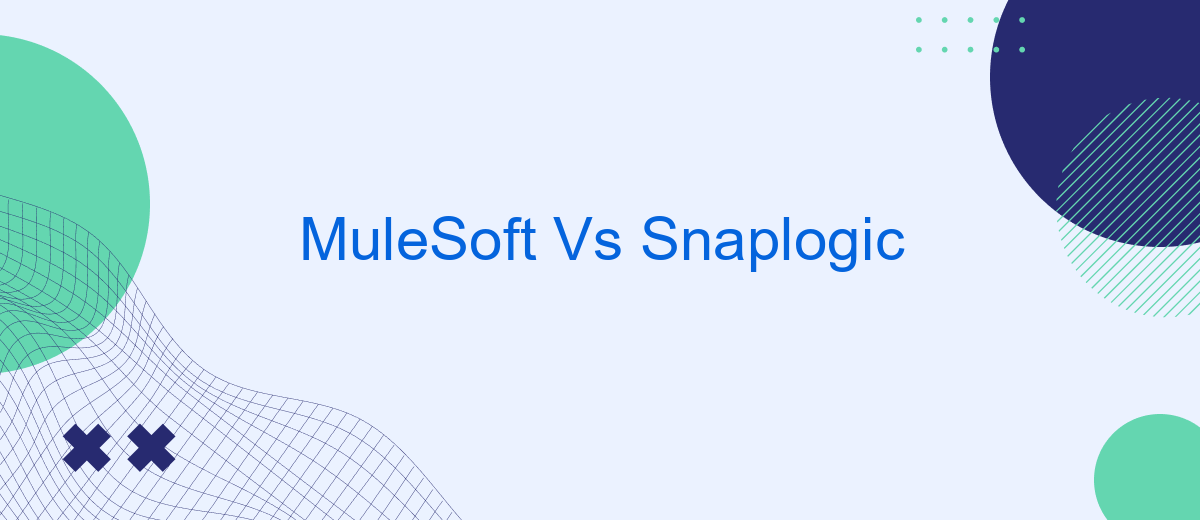In the rapidly evolving landscape of integration platforms, MuleSoft and SnapLogic have emerged as leading contenders. Both offer robust solutions for connecting applications, data, and devices, but they differ in features, capabilities, and use cases. This article delves into a comparative analysis of MuleSoft and SnapLogic, helping organizations make informed decisions on which platform best suits their integration needs.
MuleSoft
MuleSoft is a leading integration platform that enables businesses to connect applications, data, and devices seamlessly. It provides a comprehensive solution for API management, data integration, and workflow automation, making it a popular choice for organizations looking to streamline their digital transformation efforts.
- API-led Connectivity: MuleSoft's API-led approach allows businesses to create reusable APIs, facilitating faster development and easier maintenance.
- Data Integration: With MuleSoft, companies can integrate data from various sources, ensuring consistency and accuracy across systems.
- Scalability: The platform is designed to handle large-scale integrations, making it suitable for enterprises of all sizes.
- SaveMyLeads Integration: MuleSoft can be integrated with SaveMyLeads to automate lead management processes, enhancing marketing and sales efficiency.
Overall, MuleSoft stands out for its robust capabilities and flexibility. By leveraging MuleSoft, businesses can achieve greater agility, reduce operational costs, and improve customer experiences. Its ability to integrate with services like SaveMyLeads further extends its functionality, providing a comprehensive solution for modern enterprises.
Snaplogic

SnapLogic is a robust integration platform as a service (iPaaS) that enables organizations to connect various applications, data, and APIs seamlessly. It leverages a visual interface, allowing users to design and deploy integrations with minimal coding. This makes it accessible for both technical and non-technical users. SnapLogic supports a wide range of connectors, known as "Snaps," which facilitate the integration of diverse systems, including cloud services, on-premises applications, and big data environments.
One of the standout features of SnapLogic is its ability to handle complex data transformations and workflows efficiently. The platform's scalability ensures that it can manage high volumes of data and transactions, making it suitable for enterprises of all sizes. Additionally, services like SaveMyLeads can complement SnapLogic by automating the process of lead integration, enhancing the overall efficiency of marketing and sales operations. By leveraging such tools, businesses can streamline their workflows and improve data accuracy across various systems.
Integration Patterns

When comparing MuleSoft and SnapLogic, understanding their integration patterns is crucial for choosing the right platform for your needs. Both platforms offer robust tools for seamless data integration, but their approaches and capabilities differ.
- Point-to-Point Integration: MuleSoft provides a comprehensive set of connectors for direct integration between applications, while SnapLogic offers a more flexible approach with its "snaps" that can be customized for various endpoints.
- API-led Connectivity: MuleSoft emphasizes API-led connectivity, allowing developers to create reusable APIs for different services. SnapLogic, on the other hand, focuses on ease of use with its drag-and-drop interface, enabling rapid API creation and integration.
- Event-driven Architecture: Both platforms support event-driven architecture, but MuleSoft's Anypoint Platform provides more advanced features for real-time data processing and orchestration.
Overall, the choice between MuleSoft and SnapLogic depends on your specific integration needs and technical requirements. If you need a user-friendly interface and rapid deployment, SnapLogic might be the better option. However, for more complex integrations requiring robust API management, MuleSoft could be the preferred choice. Additionally, services like SaveMyLeads can further simplify the integration process by automating data transfer between various applications, enhancing the capabilities of both platforms.
Pricing and Licensing

When comparing MuleSoft and Snaplogic, pricing and licensing are important factors to consider. MuleSoft offers a subscription-based pricing model that varies depending on the number of users, the volume of data, and the specific features required. The cost can be quite high, especially for enterprises that need extensive integration capabilities.
Snaplogic, on the other hand, also follows a subscription-based pricing model but tends to be more flexible. It offers different tiers based on the complexity and scale of the integration needs. Snaplogic's pricing can be more accessible for small to medium-sized businesses.
- MuleSoft: Subscription-based, higher cost, enterprise-focused
- Snaplogic: Subscription-based, flexible pricing, suitable for various business sizes
Both MuleSoft and Snaplogic offer robust integration capabilities, but the choice between them may come down to budget and specific business requirements. For businesses looking for a more cost-effective solution, tools like SaveMyLeads can also be considered, as they offer easy-to-use integration services at a competitive price.
Use Cases
MuleSoft is often leveraged by large enterprises with complex integration needs, particularly those requiring robust API management and advanced data transformation capabilities. It excels in scenarios where businesses need to connect a wide variety of systems, including legacy applications, cloud services, and databases. For instance, financial institutions and healthcare organizations often use MuleSoft to ensure seamless data flow between disparate systems, ensuring compliance and data integrity. Its powerful Anypoint Platform allows for the creation of reusable APIs, which can significantly streamline the integration process across multiple projects.
On the other hand, SnapLogic is favored by organizations that require rapid integration solutions with minimal coding. Its user-friendly, drag-and-drop interface makes it an excellent choice for businesses looking to empower non-technical users to build and manage integrations. SnapLogic is particularly useful for marketing teams and sales departments that need to quickly connect various SaaS applications and automate workflows. For example, services like SaveMyLeads can be integrated with SnapLogic to automate lead generation processes, ensuring that leads from various sources are captured and managed efficiently. This approach helps streamline operations and improve response times, making it ideal for dynamic business environments.


FAQ
What are the key differences between MuleSoft and SnapLogic?
Which platform is more suitable for small to medium-sized businesses?
How do MuleSoft and SnapLogic handle API management?
What are the deployment options for MuleSoft and SnapLogic?
Can I use third-party services to help with the automation and integration setup for MuleSoft and SnapLogic?
Would you like your employees to receive real-time data on new Facebook leads, and automatically send a welcome email or SMS to users who have responded to your social media ad? All this and more can be implemented using the SaveMyLeads system. Connect the necessary services to your Facebook advertising account and automate data transfer and routine work. Let your employees focus on what really matters, rather than wasting time manually transferring data or sending out template emails.
